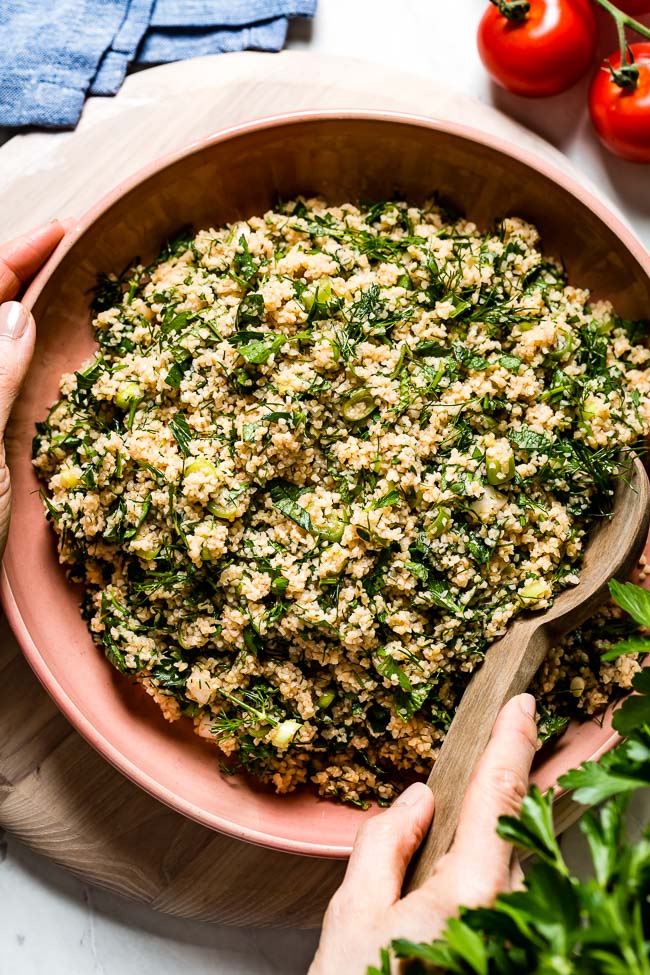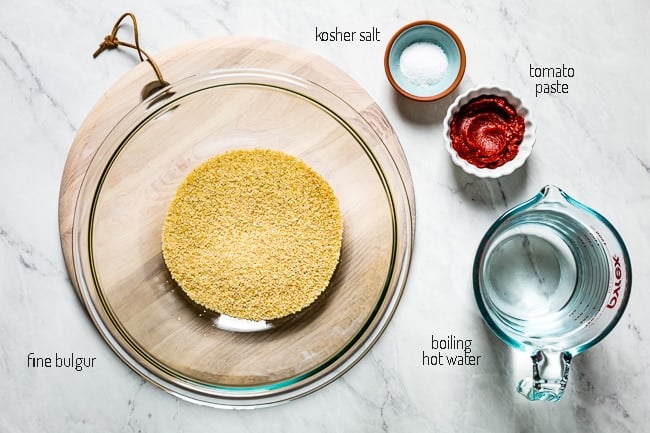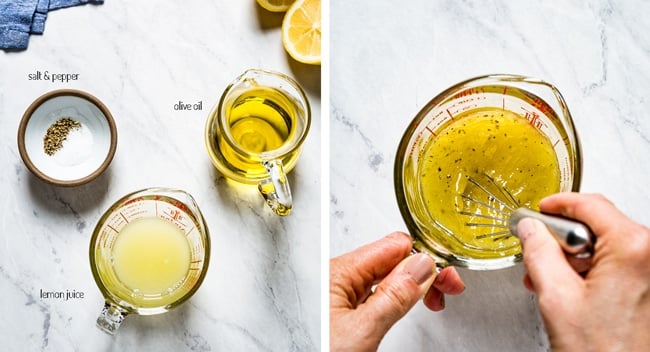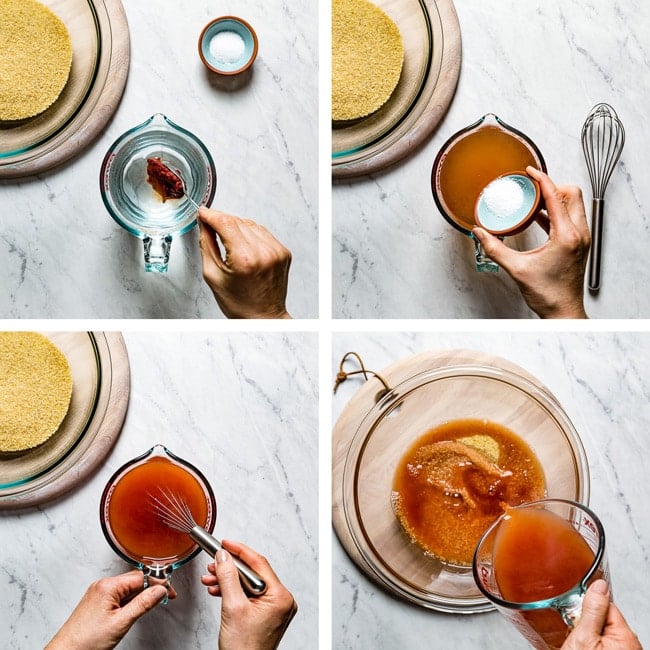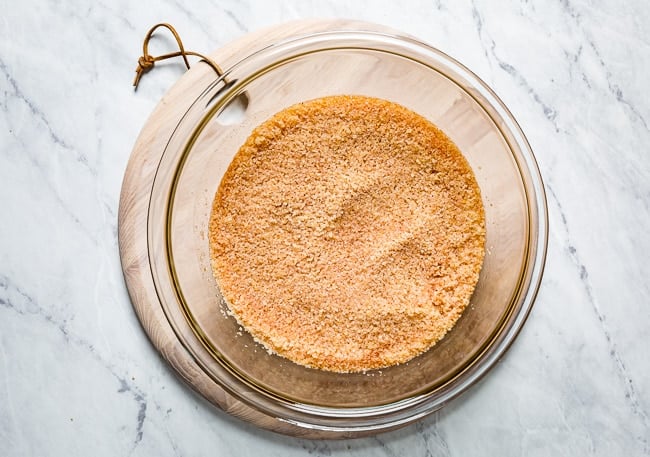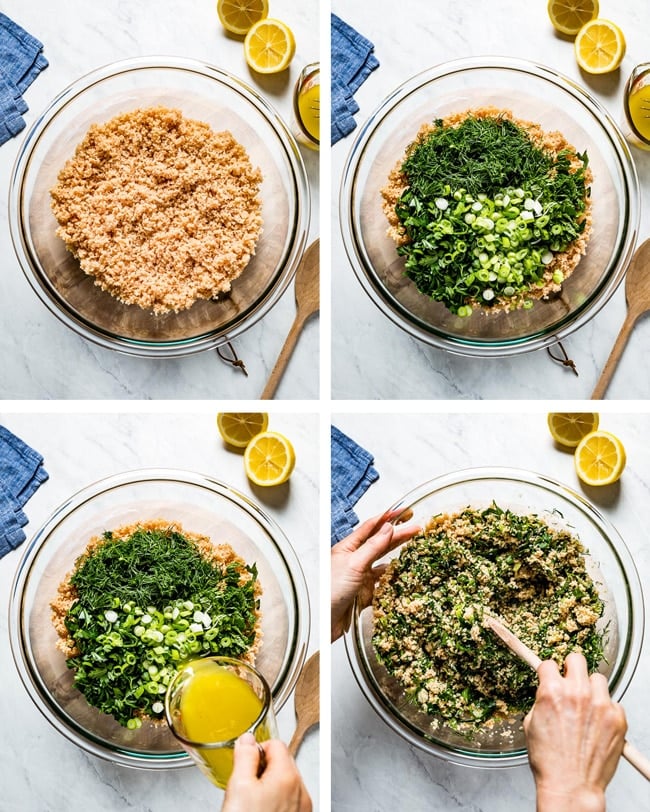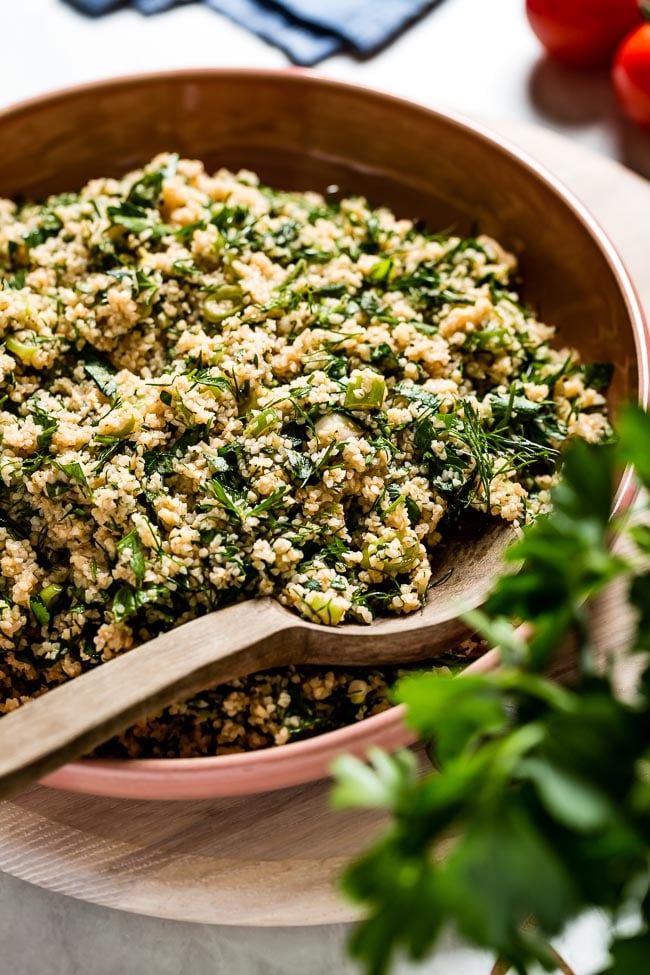If you are new to cooking with bulgur and need a refresher, be sure to check out the posts I wrote on Types of Bulgur and How To Cook It based on the type you are using. In today’s post, I will share everything you need to know about making tabbouleh salad, including but not limited to the origin of it, ingredients and procedure (with step-by-step how-to photos), variations, along with my mom’s tips for the best tabouli recipe.
What Is It & Where Is It From?
Tabbouleh, also known as tabouli and tabouleh salad, is a fresh herb (mostly made with fresh parsley and mint) salad made with fine bulgur (parboiled crack wheat). It is mainly served as a meze or a side dish similar to other Middle Eastern recipes like Tzatziki sauce and Mediterranean hummus. According to this article on tabbouleh from Wikipedia, it originated from the Levantine region – the large area in the Eastern Mediterranean region that consists of Syria, Lebanon, Israel, Palestine, Jordan, Turkey, and Iraq. While most popular tabouli recipes are labeled as Lebanese, it is commonly made in the Middle Eastern (Arab countries) and Mediterranean regions (including Cyprus and Greece).
What Is It Made Of?
To make it easier, I am breaking down the ingredients for my homemade tabouli recipe into four categories:
Fine Bulgur:
The authentic tabbouleh recipe uses fine bulgur, but if you cannot get your hands on it, you can also use medium-coarse and red bulgur for this recipe. The cooking method would be different, but it would still work. To soak fine bulgur, you will need boiling water, tomato paste, and salt. If you want to purchase it online, this fine bulgur (affiliate link) is the one I always buy.
Salad Ingredients:
Fresh Herbs: I used a combination of fresh parsley (flat-leaf or Italian parsley), fresh mint, and fresh dill. Finely chopped.
Scallions: Finely chopped with both green and white parts. It is not traditional, but you can substitute scallions with chopped red onions.
The Dressing:
The tabbouleh dressing is made with olive oil and lemon juice and seasoned with salt and pepper. In my version of tabbouleh salad here, I am cooking 1 cup of fine bulgur but if you prefer yours less bulgur, feel free to cook less.The bulgur to water ratio I use is one to one and a quarter. In other words, I use 1 cup bulgur wheat to 1 1/4 cups of water. If you decide to use less bulgur, be sure to adjust the amount accordingly.
Optional Spices:
I kept my easy tabbouleh recipe simple and used only salt and pepper. However, my mom would always sprinkle it with sumac. I recommend using it if you have some, as it will add an additional layer of zesty flavor to the overall dish.
How To Cook Bulgur for Tabouli?
As I mentioned earlier, since fine bulgur is thin/small to cook, we prefer soaking it in hot water instead of boiling it on the stovetop. To do so:
How To Make It?
Once the bulgur wheat is cooked, the rest of making Mediterranean salad is relatively easy. Simply:
Make-Ahead Instructions:
If you want to make it a day earlier, I recommend soaking the bulgur, chopping the herbs and scallions, and keeping them in an airtight container. You can also prep the dressing and store them separately in the fridge. When ready to serve, pour the dressing over and give the tabouli mix a gentle toss to combine.
Storage Tips & How Long Will It Keep In the Fridge?
To store, place your Mediterranean bulgur salad into an airtight container and place it in the fridge. It should stay fresh in the fridge for up to 3 days. Keep in mind that this is one of those salads that gets better as it sits. I personally enjoy it more on the next day. For that reason, I usually make this easy tabbouleh recipe as a part of my weekly meal prep.
Variations:
The beauty of this Turkish tabbouleh is that it can be customized in various ways to make it match your taste buds. Here are a few variations you can try:
Tabbouleh without bulgur: If you prefer this recipe without bulgur or following a gluten-free diet, be sure to try my Quinoa Tabbouleh Salad recipe. With Tomatoes and Cucumber: While it is not traditionally added into tabbouli, you can add half a cup of each chopped fresh tomato and cucumber into your tabbouleh. Without Parsley: If you are not a fan of fresh parsley, you can substitute it with a combination of fresh mint and dill. If you do not prefer using fresh herbs, you can chop a few cups of romaine lettuce thinly and use that instead. Warm Tabbouleh Salad: You can serve this salad warm by heating it in the microwave for 15-30 seconds until it reaches the temperature of your liking. Red bulgur tabbouleh: If you live in the US and shop for bulgur in the supermarkets, you will likely be able to find Bob’s Red Mills’ red bulgur. This Mediterranean bulgur and parsley salad can be made with red bulgur. However, I recommend following my detailed instructions on cooking red bulgur rather than soaking it.
Serving Suggestions & Calories:
The easy tabbouleh recipe below makes about 4 cups of tabbouleh. I thought it would be ideal to serve 1 cup per serving, which is about 386 calories.
What To Serve it With:
While it is traditionally served as a meze, I usually serve this Middle Eastern salad with bulgur as a side dish with meat and chicken dishes or as a light salad by itself. Below are a few recipes that I recommend to enjoy your salad:
Turkish Meatballs Baked Meatballs and Potatoes Ayran – Turkish yogurt drink Ina’s Pot Roast Turkey Meatloaf recipe If you enjoy cooking using items from your pantry, be sure to check out my collection of Pantry Item Recipes

